|
Railways, Part II , Blisworth, Northamptonshire, UK. All pictures are presented at relatively low resolution. Printed below each image is the photographer's name, if known. |
|
|
Back to INDEX page Part I This is Part II Part III Part IV |
|
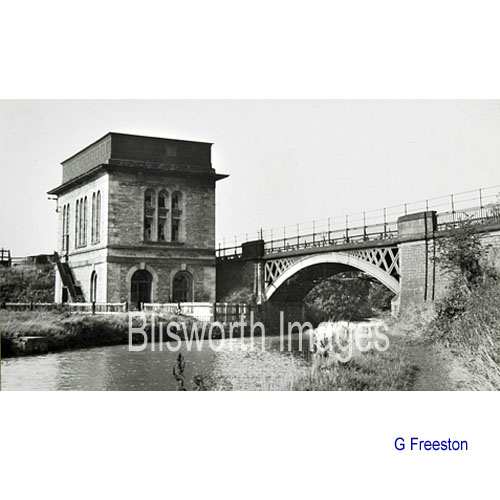 |
27-11 The "Gas House", aka Tank House, to the immediate north of the station. Date 1952 - note that the 1837 original girder-work of the bridge is not yet encased in concrete. On top of the tower is a water reservoir which was filled from the canal and drawn on by the steam locomotives. |
 |
27-12 A view from the other side of the bridge dated c. 1965. The girder encasement was in hand at that time - as part of the electrification of the main line. The reason the building is named Gas House is because a coal baking furnace coupled to condensing retorts were incorporated into the building for the purpose of generating standard coal gas. There is a discussion on this matter. The substantial chimney at the corner of the building is the base of a stack which once reached higher than the crane. See images in Part III. It was the chimney for the steam boiler and engine, in the building, used to raise water from canal level to a reservoir that was accessible to the steam locomotives.
|
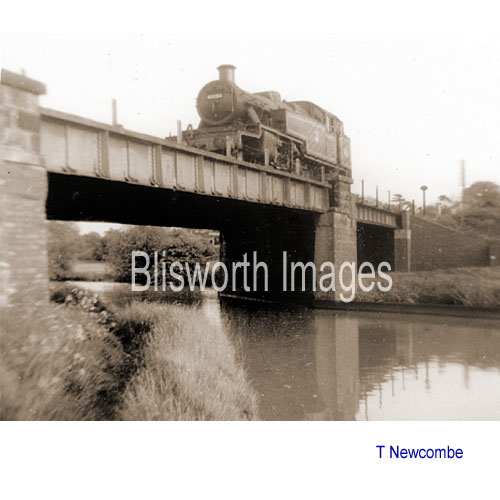 |
27-13 A view of the 1845 branch line to Northampton, looking back towards the station. The bridges have been removed but the brick piles on both sides of the canal are still in place. The structure in the distance is obscured by vegetation and may have been removed. These are smaller locos compared to the main line expresses and were called "Puffing Billy" in Blisworth and "The Little Dav" in Gayton. The latter name arises because the train runs backwards to Daventry once it has deposited or picked up passengers at Blisworth. The loco is no. 40156. The footnote carries copy from a travel guide of the 1840s.
|
|
Footnote: From the "RAILWAY HAND BOOK or the TRAVELLERS DESCRIPTIVE GUIDE" by F. H. MAIR , 1845 - This branch railway which connects Peterborough with the main London and Birmingham Line at Blisworth is forty-seven and a quarter miles in length, and was opened to the public on Monday, June 2, 1845 when several of the Directors, accompanied by the Mayor, Corporation, gentry, and other inhabitants of Northampton, journeyed in a train of fifteen first-class carriages from Northampton to Peterborough in two and a half hours, including stoppages of about fifty minutes, every prominent view of the line throughout its whole length being occupied by the astonished and wonder-stricken natives. |
|
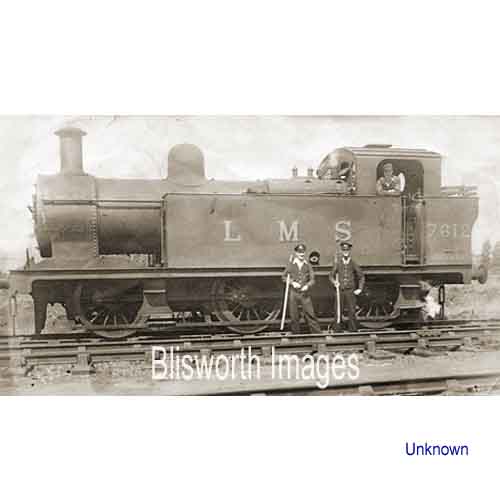 |
27-26 Fred Digby - Shunter driver in the Far Cotton shunting yard, Northampton 1946. The iron bars the two men are carrying are levers to lift the heavy chain links on or off a coupling hook.
|
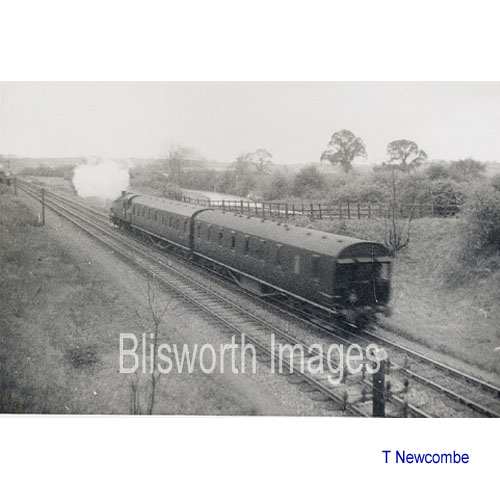 |
27-23 The Northampton branch line looking towards town. This level part was used as a substrate for the bypass.
|
|
27-14 An early picture of the workers at the wagon repair shop at the station. The shop was owned by Bevan Co. Ltd., the same company that mined the eastern fields (c1860 - 1912) for ironstone. John Wilks was the foreman - fifth from the left. He was a blacksmith and his son worked with the blacksmith partnership in Blisworth. Date of this picture is said to be 1884 (H.J. Wilks, son of the foreman). Note the chimney stack in the background - its function is not known.
|
|
|
Footnote: A very heavily annotated map of the station and goods-marshalling area was found in the GF Collection |
|
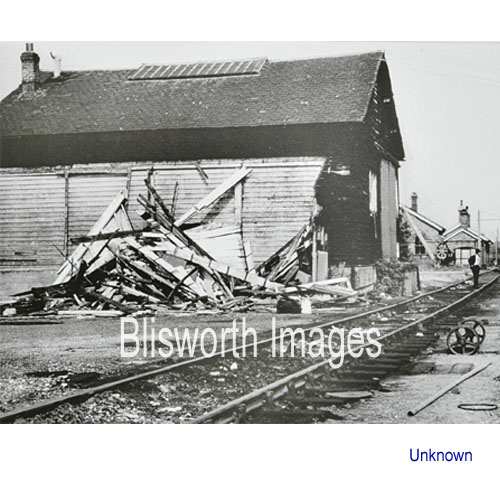 |
27-15 The station was closed in 1960 and demolition proceeded a few years later. Here the railway goods shed is being dismantled in 1966. |
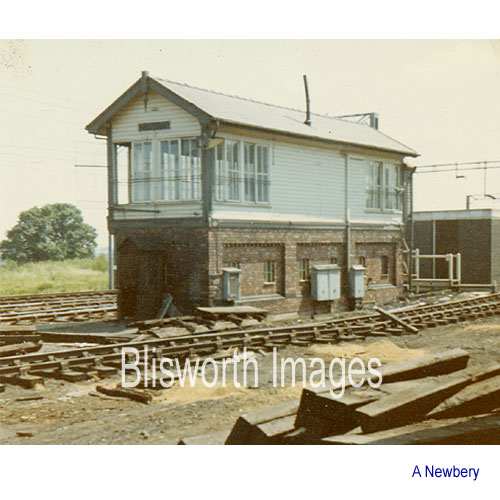 |
27-21 The main signal box at Blisworth Station - date 1970.
|
| Reminiscences of John
Whitehead: John has also written a more
detailed account of the 'business' of staff in a signal box with
some emphasis on the main signal box at Blisworth station.
"At Blisworth station signal box I got to know a signalman, Jack Morrisroe, a super bloke, who lived in the old railway cottages on the old A43 near where it's crossed by the railway. Jack was a Staffordshire lad. His father was ganger, in charge of a team of platelayers responsible for track maintenance, at Standon Bridge between Stafford and Crewe and I believe Jack started his railway life as a booking boy (whose job was to accurately record the times trains passed the signal box) in the Basford Hall Sorting Sidings South box which controlled the huge goods marshalling yard south of Crewe. "The Blisworth box had 75 levers and was one of the largest on the LMS to be staffed by only one man plus a booking boy. The levers most used were at the extreme ends, being nos. 1,2,3,4,5 and 73,74,75, and on summer weekends it was exceptionally busy as most people went on holiday by train in those days. There were also extensive goods sidings on the up side (very busy at night time!) plus branches to Northampton and Towcester. There were loops for goods trains on each side of the up and down main lines between Blisworth and Gayton and there was an up line intermediate block signal on the ascent towards Roade. |
|
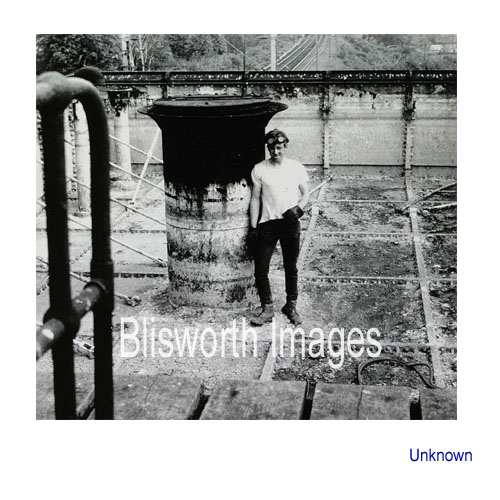 |
27-16 Here the large sheet steel tank on the Gas Tower is being removed. |
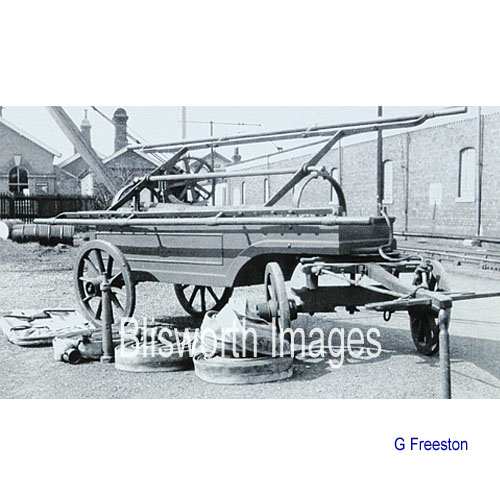 |
27-17 This is a manually operated fire engine, complete with a set of hoses, which was found in one of the sheds. George managed to get a photograph but the machine was "spirited away quickly - I know not where". |
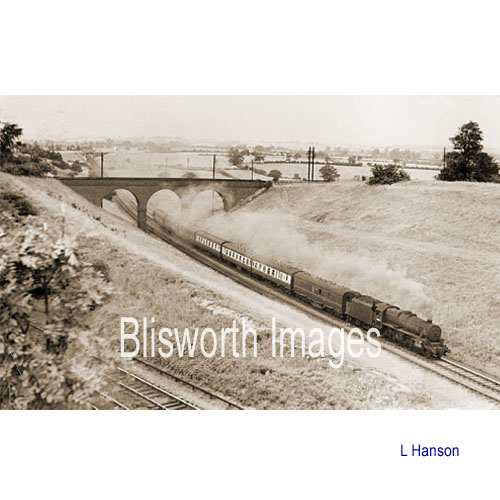 |
27-18 A classic shot of an
express in Roade Cutting in 1950. The train has left Northampton
on a branch not built until c. 1870 and is about to join the main line
going south, ie. "up" towards London. The main line can
just be seen in the foreground. This was an exciting place for
children before, probably wisely, the rail companies more effectively
fenced off the slopes.
The narrow bridge provides field access for local farms. The photograph was taken from the high four-arch "Black Bridge" which carries the road from Blisworth to Courteenhall. The loco is a "Black Five" 4-6-0 and probably based at Rugby or Northampton depot. |
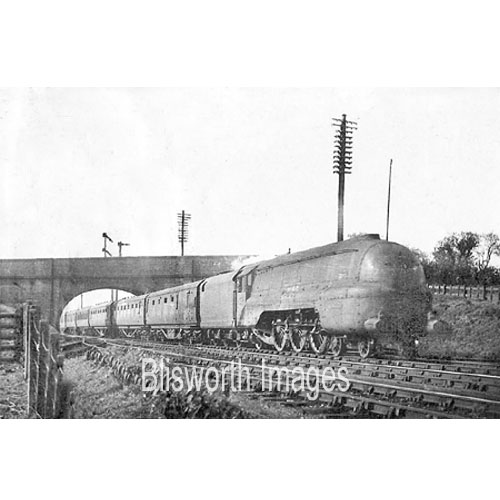 |
27-27 One of the the Coronation class locos passing Gayton loops. It is of the type used on the pre-war Coronation Scot train. This would be after WWII judging from the poor condition of the loco, say c. 1946. The loco is stream- lined and they originally were either blue with silver stripes or red with gold stripes. The stripes are not apparent in this picture due to grime and this fact suggests that the picture was taken after a period of neglect in the WWII. The horizontal signal is indicating danger for the loop as explained in an article by John Whitehead.
|
|
Footnote: Bernard Dodd kindly wrote to point out that the appearance of locos, such as the above, was not only due to grime and/or neglect on account of the parlous state of our railways after the WWII - "most engines were painted in matt black in WWII including the Duchesses as shown in the photo. It does seem strange as I would think a black engine was as easy to see as a maroon one. I have read somewhere that LNER cheated with some of their streamlined A4 engines by painting them in Gloss Black". |
|
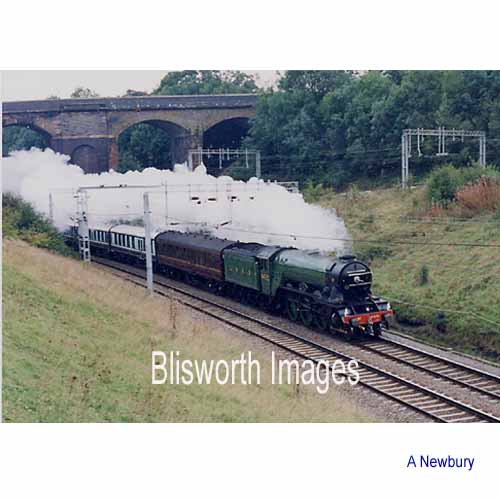 |
27-25 Photographed in Oct 1999, this was a rare event as the Flying Scotsman hauls a train on the branch line towards Northampton. The well maintained locomotive was on a special outing which has become impossible to arrange as main line train speeds increase. The main line is to be seen in the background with the "Black Bridge". |
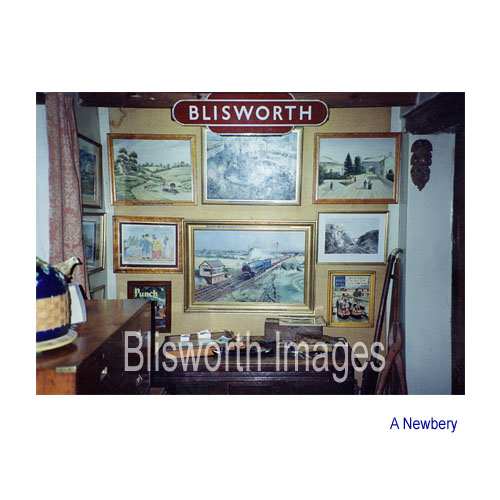 |
27-19 George Freeston collected
through his lifetime until his house groaned - here was his "Railway Corner".
The picture in the centre shows a c. 1952 "down express" passing
Gayton Loops, which are slow side-tracks, just to the north of Blisworth
Station. The painting, by Peter Bradshaw in 1976, was sold after
George passed away but it remains in the village.
With all the tracks near Blisworth it became the custom to rely on the passing of the train with its trail of steam to indicate the time of day, especially for farmers sitting on a noisy tractor with their eyes taking in neighbouring fields as well as the job in hand.
|